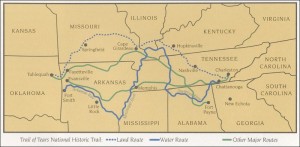By Natalie Duleba
Managing Editor
A professor is lecturing in class, discussing politics or microbes or gender norms, and buzzing fills the air. More buzzing follows, maybe one or two pop song ring tones join the spreading noise filling the classroom. It’s alright to look at the phone, to listen to the voicemail. Because nearly everyone at Ohio Wesleyan knows it’s an OWU Alert.
The first OWU Alert of the semester went out to every student registered on Tuesday, Sept. 4. It wasn’t an emergency; it was the standard test to make sure the system was working properly.
From now on, any OWU Alert sent out will be about an actual emergency situation near campus. The university is required by the Jeanne Clery Disclosure of Campus Security Policy and Campus Crime Statistics Act (Clery Act) to “make timely reports to the campus community on crimes considered to be a threat to other students and employees…that are reported to campus security or local law police agencies,” according to the act.
The Clery Act is named after a freshman student from LeHigh University who was raped and murdered in her residential hall in 1986. The Act was passed in 1990 as the Crime Awareness and Campus Security Act in response to crimes across campuses that were left unreported and the backlash that followed.
The purpose of the Clery Act is to keep students aware of potentially harmful situations and to “aid in the prevention of similar occurrences,” according to the act. Crimes that fall under the Clery act include murder, sex offenses, robbery, aggravated assault, burglary, motor vehicle theft, manslaughter, arson and arrests for liquor law violations, drug-related violations and weapons possession. Universities are also required to compile and release annual security report, a crime log and crime statistics in addition to the timely warning system.
The university uses Connect-ED, an emergency contact system to send out all the OWU Alerts. Connect-ED is used on over 150 campuses nationwide as well as for secondary education, municipalities and state and federal agencies.
OWU sends out two to three alerts a year regarding emergency situations, ranging from persons at large to nearby shootings.
It’s up to OWU to make the call regarding whether an alert should go out or not regarding a situation. Bob Wood, Public Safety director, Cole Hatcher, director of media and community relations and Craig Ullom, vice president for student affairs work together to make the decision.
“We tend to go conservative,” Wood said. “If there’s a question of whether we should send one out, we tend to send one out to be safe.”
An OWU Alert can also go out to inform students of crime trends in the area that could be a threat to students on campus.
“If it’s imminent and on-going, we would send out an alert,” Wood said. “Distance from campus also comes into play. If it’s a couple of miles away from campus, we probably won’t send out an alert. But if it’s two blocks away, we will.”
The university began implementing the program in the fall of 2007, and has been using it consistently since 2008. Students can receive an email, a text, a phone call or all three.
“It’s my hunch that most students find out about issues via text message, which is very limited in size,” Hatcher said. “We try to add more details in emails and voice messages with the text letting people know the most basic details.”
In some cases, students are asked to stay inside their building until the situation can be resolved by Public Safety or the Delaware Police Department.
“We tell people to stay inside when there’s a shooter at large or if the suspect is confirmed to be either on campus or near campus,” Wood said.
In November of 2011, a man with silver paint covering his face robbed a pharmacy near campus and his cellphone was tracked to campus. For a few hours, students were asked to stay inside while the police and Public Safety tracked down the “Silver-faced Bandit.” Last semester, an OWU Alert was sent out after a shooting occurred in a basketball court blocks away from campus.
OWU Alerts can also be sent out for weather-related reasons or to cancel classes.
“We also will use it to share weather delays or closings to help everyone know quickly of the status change,” Hatcher said.
However, classes are rarely cancelled, and OWU Alerts don’t often go out because of inclement weather.
Currently there are approximately 1,570 people enrolled in the OWU Alert program.
“Only people with OWU email addresses may enroll,” Hatcher said. “Students, for example, are able to enroll parents; employees are able to enroll spouses and partners. This means the number of people being alerted reaches far beyond 1,570.”
Parents who receive the alerts often call Public Safety after receiving one, wanting to know what the situation is.
“We got so many calls last time that DelCom (the emergency service that answers Public Safety calls after 6 p.m.) almost shut down,” Wood said. “We’re probably going to add on a disclaimer at the bottom of the next alert, telling parents not to call us about the situation, but to wait for more information.”
Students, faculty and staff can sign up for the OWU Alerts and update their information through the myOWU portal found on the OWU website’s main page.
